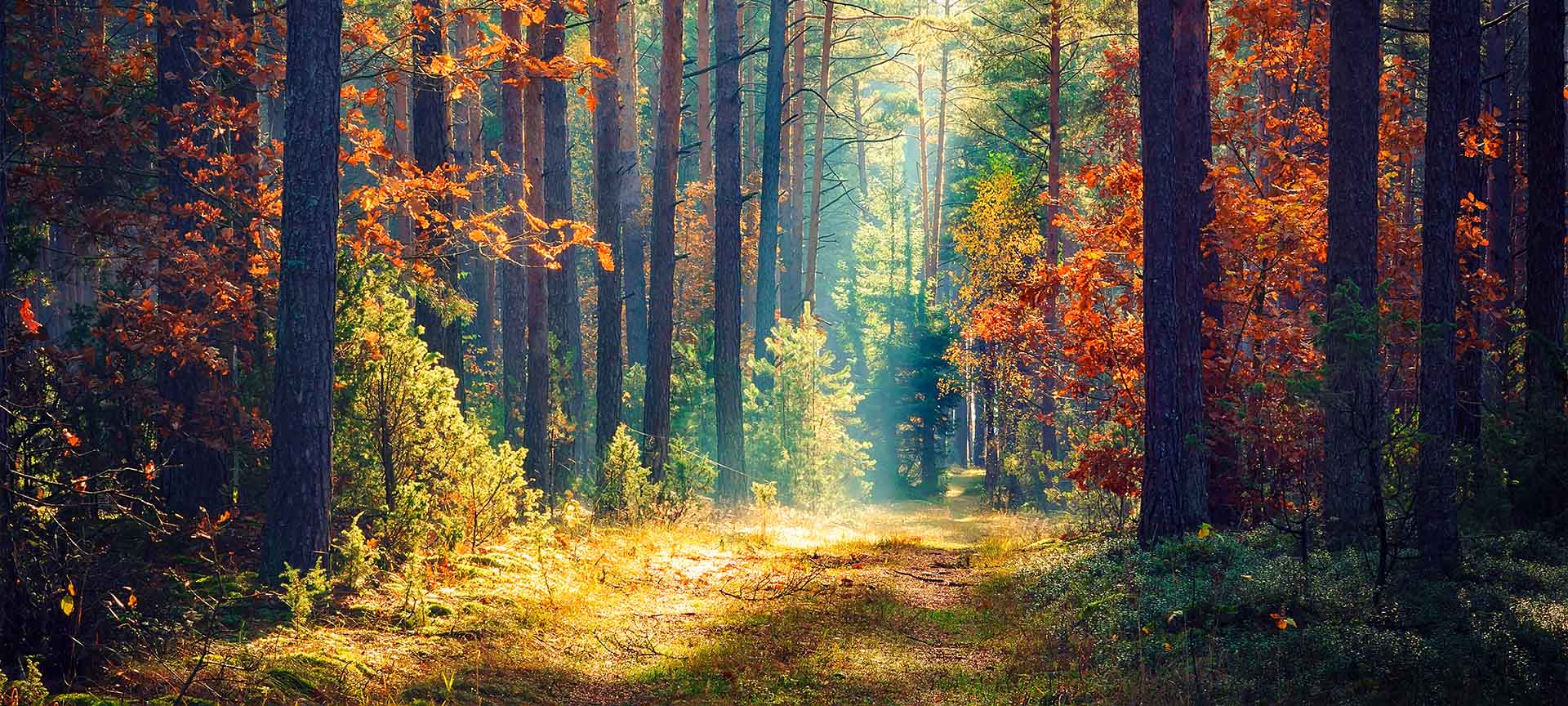1. Tell us about your career background
Ana:
I am a lawyer specialized in environmental law and policy. I have over fifteen years work experience on socio-environmental issues. I am Biodiversity Director and Deputy Director at Fundación Ambiente y Recursos Naturales (FARN). FARN is an NGO founded in 1985 and based in Buenos Aires, Argentina working from a legal and policy perspective, at all levels, for the environment to be a public policy.
I manage projects on issues such as land use planning, wetlands, native forests, protected and conserved areas, endangered species, ecosystem restoration, environmental education, access rights, human rights-based approaches to conservation and global biodiversity negotiations.
I´ve been following the CBD negotiations since 2010, and the UNCCD´s since 2017. I am an active member of the CBD Women’s Caucus and represent FARN at the CBD Alliance (the NGO participatory mechanism within the CBD). I also follow regional processes such as the Escazú Agreement on access to information, public participation and justice in environmental matters in Latin America and the Caribbean.
I am an elected member of the UNCCD CSO Panel for Latin America and the Caribbean (2022-2024), and an elected IUCN Councillor for the period 2021-2025.
Kariuki:
I recently became the Regional Director for Africa at BirdLife International last year having been in the organisation since 2005. In terms of my journey, I started out by doing a wildlife management degree in Kenya. This was triggered by an interest in nature that I have had since childhood. As a rural Kenyan and the youngest of my siblings, I took care of the livestock in the field and interacted a lot with nature. During my bachelor’s degree a lecturer got me interested in birds, and I focused my degree research project on this, and later interned before working full time at the bird department of Museums of Kenya. I as well as volunteered my time for Nature Kenya in my spare time. My interaction with these organisations also opened me up for a prestigious master’s degree schiolarship.
In 2005, BirdLife International reached out to me and at first, I was unsure, however in conversation they highlighted the opportunities to grow within the organisation and I have been with them ever since, and have worked in four different roles, each with unique but quite interesting challenges. Alongside my work with them I also continued with academic pursuits, completing a PhD.
Over the years I have moved from more technical roles to the office environment and management. Something that aided this transition is that I enjoy interacting with people and understanding staff at all levels. I have a particular love for mentoring and for guiding technical people. The challenge when moving from a conservation biologist to a conservation leader, has mainly been around the language spoken at a leadership level, with a need for big-picture thinking and a broader surface outlook.
Zoe:
I have been with Fauna & Flora since 2006. Before that I started out doing a bachelor’s degree in Zoology. I loved connecting with nature and seeing it thrive. I recognised through the process that the majority of pressures on nature come from people. I worked briefly for a local government in the UK and then went to study a Master’s in Environmental Policy, Planning and Regulation at the LSE as I wanted to try and understand the effects of socioeconomic and political factors on nature.
On the back of that I became interested in the private sector and how market forces can have negative impact on the environment. How do you bring these worlds together in a way that brings harmony instead of constant tension? During my masters’ research, I came across Fauna & Flora, who have a long history working with the private sector. I started working in the corporate sustainability team, looking at companies and how they could manage risk and opportunities within biodiversity and ecosystem service space, but through travel with work and in particular in Indonesia, I became hooked with a desire to work on-site. In particular, I enjoyed working with issues around protecting species whilst enabling people to thrive and looking at how the rights of local communities can be affected by decision-making at government and corporate levels. These experiences led me into the finance and enterprise space, looking at bringing in sources of finance to conservation, which included completing a Masters in Business Administration, and eventually to my current role as Director, Climate and Nature Linkages.
Sebastian:
I am a marine biologist by training, who studied in the UK. I have worked for non-governmental organisations across the world in Greece, UK, Indonesia, Australia, Fiji, Costa Rica, Panama, the US and Colombia and since 2022, I have been based in Brussels.
With my background as a field biologist, I specialise in sea turtles, but being part of an organisation you become a jack of all trades; policy, fundraising, programme management and stakeholder engagement. I have progressed in my career and taken on more responsibilities, less of the fun stuff on the field and more time in meeting rooms. Now I talk to community leaders, donors, governments and senior leaders to highlight the importance of tackling the dual crisis: climate and biodiversity.
The scientific evidence is overwhelming and there is an increased recognition that these are existential threats to society. Increasingly, governments as well as companies are really prioritising climate and nature issues. This has created greater demand for people with experience in this field and has created a premium for top talent in this space.
2. What would you say are the emerging trends and opportunities in conservation?
Ana:
While not perfect, the Kunming-Montreal Global Biodiversity Framework (GBF) that was adopted last December by COP15 of the CBD after 4 years of negotiations is a step in the right direction. It brings about a paradigm shift as it moves towards human rights-based, gender-responsive and socially equitable biodiversity conservation. The GBF addresses the cultural and rights dimensions of biodiversity in an improved manner. The 2011-2020 Aichi Biodiversity Targets were pretty much blind to human rights – the GBF is fully transformative in this respect, and we must build on that. This achievement would not have been possible without the articulated efforts and advocacy of Indigenous Peoples and Local Communities (IPLCs), women and youth groups, and numerous civil society organizations.
With the GBF´s Target 23 on gender equality, the CBD becomes the first environmental treaty to have a specific target on women’s rights. It embeds a gender-responsive approach in which all women and girls have equal opportunities and capacity to contribute to the GBF’s objectives. This includes recognition of their equal rights and access to land and natural resources, and their full, equal, meaningful and informed participation and leadership at all levels of action, involvement, decision-making and policymaking related to biodiversity.
The GBF also states the full recognition and respect for the rights to land, resources and territories of IPLCs, their culture and traditional knowledge, and guarantees for the protection of environmental and human rights defenders. Not only with an exclusive target (number 22) but in different relevant targets throughout the text.
The fact that in its Target 22 the GBF calls to ensure the full protection of EHRD is highly relevant and transformative. This is very relevant in my region, Latin America and the Caribbean, one of the most dangerous in the world for environmental human rights defenders (EHRD). Dozens are attacked and killed every year for defending nature. This is also totally aligned with the provisions of the Escazú Agreement which was signed in my region in 2018 and fully into force, the first treaty to oblige State Parties to protect EHRDs.
Kariuki:
Africa has conservation opportunities. There is also a history of expansive areas of land covered with natural habitats such as forests, among others. However, we are starting to see huge losses of these and the accompanying impacts of climate change, some of them now quite obvious to the public’s eye. Now everyone seems to see the challenges that conservationists have been speaking about for decades. As a result, there is more interest among the public around issues of environment and conservation, and it is relatively easier to convince people to take action. The challenge is that it is harder to make impactful changes as we are so far along in the crisis. We are also seeing a lot of interest carbon financing and investment. This is a positive note, however, with this demand, there can be a problem. How do you control how it is done? There is a need to think about management and ensure that it is done with care.
The Covid pandemic also brought with it both opportunities and challenges. Many organisations struggled to come out of it due to loss of income. But it also brought a realisation that we need to conserve what we have and look after nature. For instance, during the lock downs there was a growing appreciation for nature and an increase in local tourism.
Another trend is that people are realising the need for collaboration. BirdLife International already works in a partnership model and often with local partners. What we are seeing is an increase of transnational collaboration and regional work. There is still the challenge of competition and limited resources, but that realisation of the importance of collaboration on impact is growing.
Finally, I want to mention technology as an important tool in the conservation space. Particularly in Africa the smartphone is used for information sharing and involvement. For example, there are mobile apps for atlasing birds. Nonetheless, with this, we need to ensure we know how to harness this information.
Zoe:
There has been a change in how the role of nature is viewed and a big part of this is the penny dropping on the connection with climate risk and response. And there are positive moves within the private sector with a focus on finance related to these trends. As nature-based solutions to climate change are prioritised, I am mindful it has to go hand in hand with deep and rapid decarbonisation. We want investment in nature to be genuine and prioritised, but we also need to get as close to the Paris goals as we can.
Another opportunity is the role of tech. There is an increasing amount of innovative information that is accessible and can be shared at speed. Equally, we do need to step back and acknowledge the importance of people on the ground. Fauna & Flora’s strategy embeds this long-held value, and continuously questions: how is conservation genuinely locally led?
We know that the work needs to be for people and by people in order to be sustainable, in a matrix system that allows us to realistically and durably scale up.
Sebastian:
If I look back a decade, there were more limited career opportunities for graduates with environmental degrees, a modest number of non-governmental, academia.
Over the years I have seen an increase in companies, from consumer goods, to retailers, consulting firms and financial institutions hiring biodiversity experts. There is rapid growth in this sector at the moment. Years ago, it was other NGOs that were competitors and now it is private companies and the main challenge here is that they offer bigger packages and salaries. I believe that NGOs still have the edge in relation to mission, but it is important to track the trends to stay competitive.
Overall, it is good for the planet that other actors care and are getting involved. It has opened up opportunities for environmental professionals and hopefully encourages people to go down this path.
Another trend that we are seeing is the advantage of having expertise and experience across subject matters and sectors, because the challenges faced by society and companies are interconnected. There is a need to address the environmental and socioeconomic situations simultaneously. Having a combination of social science and climate, or of environmental and business management makes candidates very attractive to clients. Especially if connected to global experience.
Reflecting on my own career I recognise that moving from technical to management can be a difficult change. What makes you successful as a technical expect doesn’t necessarily make you a successful leader and manager. It means there needs to be a process of being able to stop doing what you are an expert in, look at what you need in the new role and be open to letting go.
3. What are the main leadership challenges in the space?
Ana:
The GBF will bring diverse processes at different levels. For instance, at the national level, the National Biodiversity Strategies and Plans of Action (NBSAP) are the main tool to apply the GBF. NBSAPs are expected to be adopted as policy instruments, and developed and implemented in an effective, participatory manner.
They imply the involvement of decision-makers from diverse state agencies whose activities have an impact on biodiversity, as well as the engagement of civil society observers and rights holders at the local and national level to integrate their priorities and needs, in order to create ownership and increase the chances of reaching the biodiversity goals. For the latter, capacity building and awareness raising among civil society organisations of all sorts (formal and informal, assemblies, movements) will be key to ensure these groups fully participate and contribute.
Civil society will have at hand a process and tools to hold the state accountable, expose it at the global level if necessary, and reiterate the demand for a real will to protect our biodiversity, the common good and not the concentrated interests of a few. NGOs, women’s groups, youth, indigenous peoples, local, rural, peri-urban and urban communities, academic and technical representatives need to take an active part and be very vocal on biodiversity conservation.
But to do so, it will be necessary to disseminate the existence of these institutional spaces that are unknown to many and to generate the capacities on how to make the best out of them, making their voices heard and influencing decision-making. Otherwise, there is a risk that the conservation measures will be blind to the real needs of the territories, ecosystems and communities. This is a collective task that begins immediately. At the same time, the global biodiversity targets to 2030, offer renewed opportunities for civil society organisations in my region to address a series of pending socio-environmental agendas and/or with ample room for improvement, such as: advancing in the environmental management of the territory; deepening the connectivity and ecological integrity of ecosystems; promoting the restoration and expansion of protected and conserved areas in a strategic and participatory manner; integrating biodiversity in decision-making and productive sectors; providing greater funding for biodiversity, with a special focus on providing funds to IPLCs; and effective realisation of the human right to a healthy environment, among other fundamental human rights.
Kariuki:
In terms of leadership, our continent is growing very fast but at the same time we have come very far. We have issues of capacity; I see this when I am looking to bring in employees. There is a big gap between those who are experienced and qualified and those who want to enter the conservation work and leadership market. Fresh conservation graduates are finding it very hard to join the market, unless they start networking quite early, for example through internships and voluntary work, and once a conservation worker gains the relevant experience within your organisation, then others become interested in them. As a leader, losing staff is painful, and therefore retaining good staff is coming at a high cost.
There is a trend of moving around from organisation to organisation, so being able to hold on to talent is a big issue. It is rare to see people such as myself who have stayed in the same organisation for almost two decades. At the same time, it means people are increasingly accumulating transferable skills and varied ways of working, as well as an understanding of their value and what they can bring to an organisation.
Another challenge in an NGO environment is funding for work. I spend a lot of my time discussing how to sustain the organisation and the work. It has become more challenging to get the resources and there is increased competition. This means there is a need to be innovative and find non-traditional ways, not just writing proposals. It is essential to engage with private sector and charitable individuals and foundations. There is also the element of restricted and unrestricted funds. What we need is unrestricted funds, but most of the funders are hesitant as they want to see the results for each penny. For example, if given for planting trees, then the cost of each tree should not be what only the money covers, but one needs to recognise and support administrative and staff costs that come alongside it.
How you communicate your work in the conservation space is important especially when you have a specific reach. For example, at BirdLife International there is a misconception that it is only about birds. But in order for solutions, an organisation such as ours needs to look at the bigger picture and socioeconomic issues, in order to have impact.
As a leader in this space you need to be able to share the story well, showing how conservation feeds into the wider conversations and isn’t siloed.
I wanted to share a message for any upcoming conservationists. You will find that the cohorts are growing larger for each year. But the challenges remain in terms of entering the market. I would like to tell you to trust the passion that brought you into conservation and start making conscious efforts of connecting with people in the field whilst you are still studying. Don’t wait until you have finished to start engaging with the space.
Zoe:
In conservation as a sector and development more broadly, there is important self-reflection that is happening. There are fairly embedded trends in terms of how resources are deployed and who makes the decisions. There are embedded power structures even within well-meaning and impact-focussed sectors. We need a focus on being mindful in how we seek to work, looking at what local leadership actually means, and challenging assumptions of who makes the decisions in partnerships. There is a lot of new power coming into the sector, particularly as the private sector scales up its focus on nature – this is much needed, but it is important to recognise that this creates another layer of power. There is a real leadership opportunity in enabling and supporting those that have less power and influence, and there is a fundamental need for equity and walking the talk in terms of being locally-led and offering a rebalancing of power.
Bridging and recognising the extent to which those that actors in the conservation sector are becoming more diverse, requires leadership. Fundamentally, one of the biggest challenges we face is how to maintain the quality of the process and work, amid urgency, and the nature of the partnerships that will enable that to happen on a big scale. This requires pragmatism, leaving egos at the door, stepping out of individual interest, recognising that as individual organisations we can’t go as far, but in effective partnerships and alliances we can. The key phrase here is trust building.
The overall sense is that there is a real need to build greater trust and collaboration; and a big part includes Indigenous People and Local Communities, those are the people that can speak with authority on whether the projects are working or not.
Sebastian:
Challenges and solutions are interconnected and as a leader you need to seek input and expertise in a lot of different areas. You can’t tackle environmental problems in isolation and the same goes for the solutions. In the past it has been narrower, but now as a leader you have to understand the broader context, which means there is a smaller talent pool. Part of the challenge is to have sufficient talent out there that are able to see the big picture, and not get siloed into a specific track.
On the upside, talent is being recognised globally, whereas a couple of decades ago the focus on leadership was mainly from the global north. It is great to have more diversity and to allow for more diverse perspectives.
We recruit across the globe (Latin America, Africa, Asia) as this makes an organisation better, more effective, and able to understand context. Every organisation benefits from having diverse perspective. In terms of solutions, it should mean more input and creativity. All organisations I have worked in across my career have been very diverse and it is something that attracts me and has kept me in the sector.
Another point I want to make is that there is a big opportunity through the increased interest of the private and public sector in this space. At the same time, they still struggle to know how to engage, and the NGOs don’t always know how to speak the business language. This calls for skills that interlink and connect the two. Having the ability to look at both the business and the charity angle and bring it together.
It is the mission that motivates me to stay in the sector – I am not in this career to make money. I am particularly drawn to the mission of Conservation International and there are two things I would highlight that have kept me here for 17 years:
1. The intellectual curiosity that can be found in their DNA. There is a constant feeling of evolution and innovation.
2. The other point would be the value of entrepreneurs. If you can demonstrate value and impact, then there is a lot of space to grow and take your role and the organisation in new directions.
In many ways, when I started working in this field, we wanted to get to the position that we are in now. It is a huge opportunity and a collective responsibility of the conservation movement across NGOs, governments and private sector to put the planet on a different trajectory and seize the opportunities before them.







